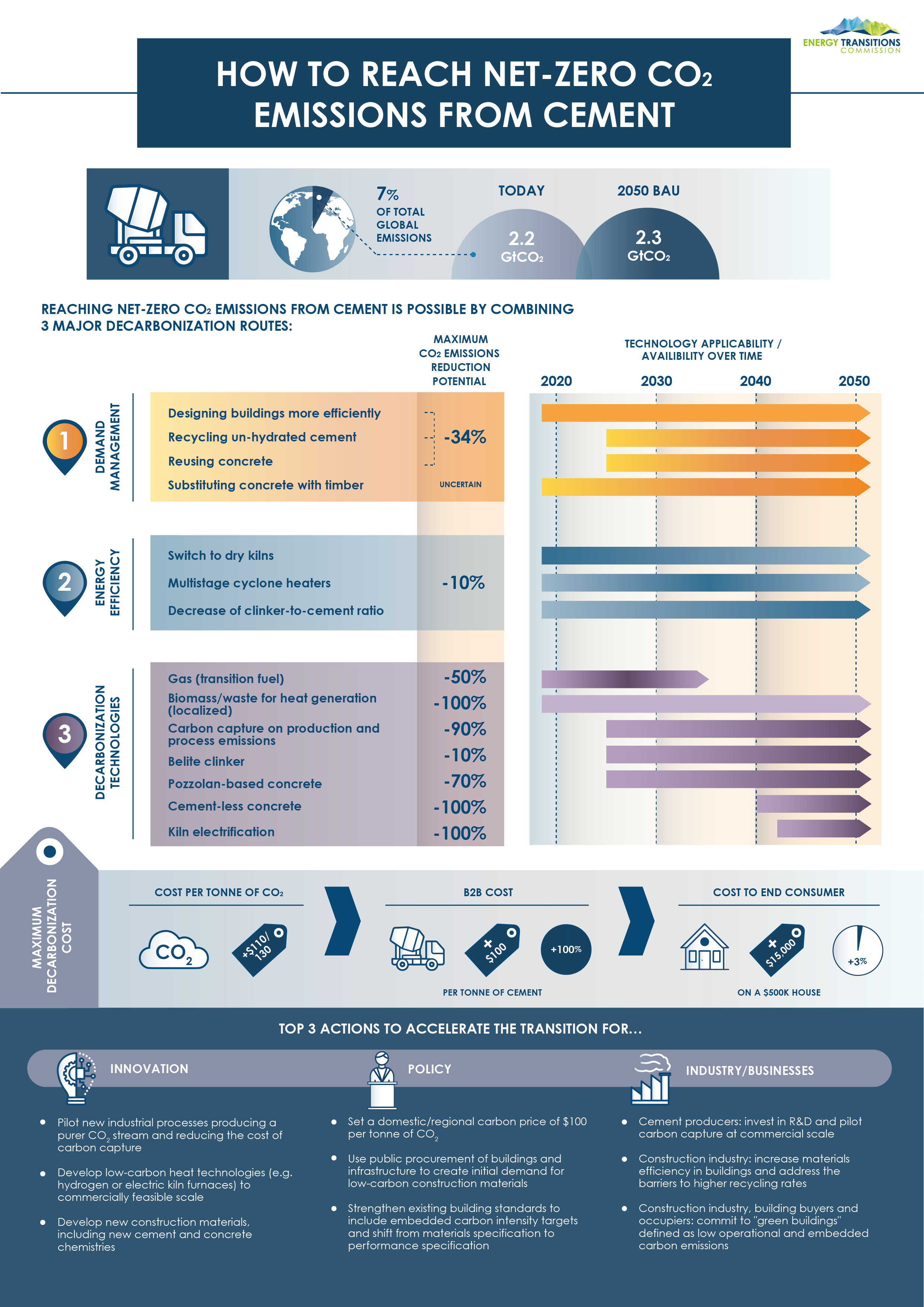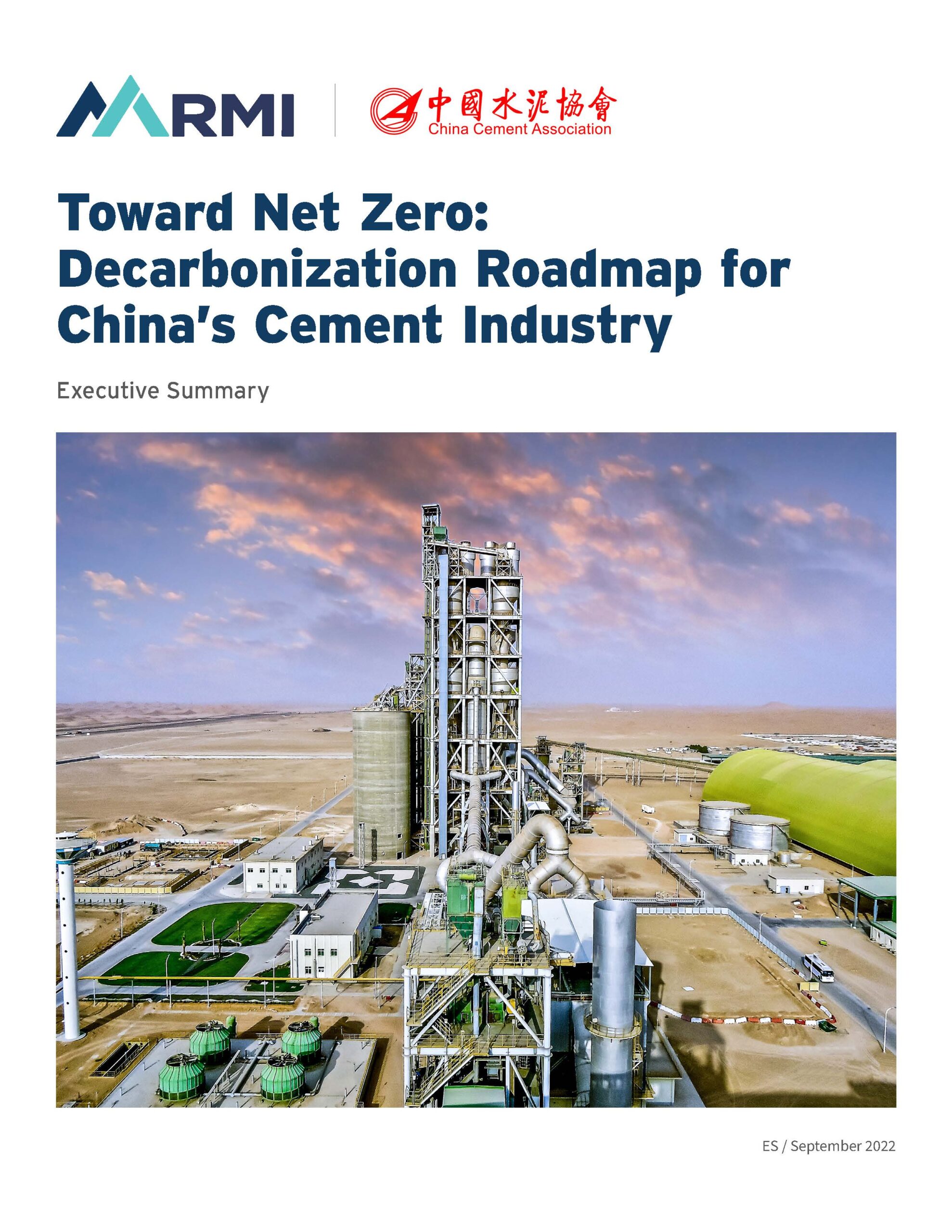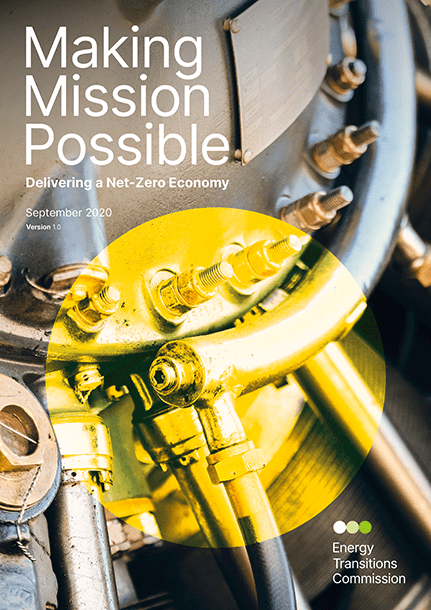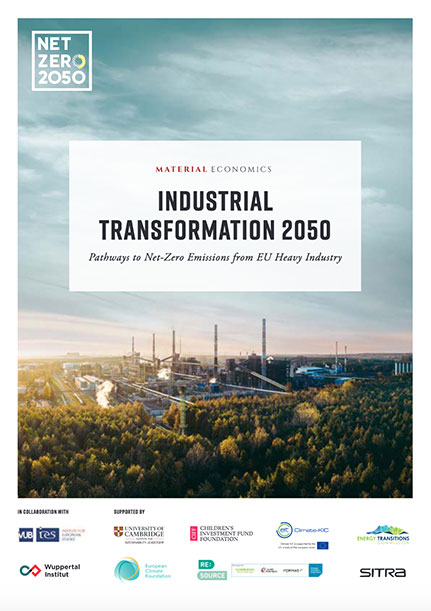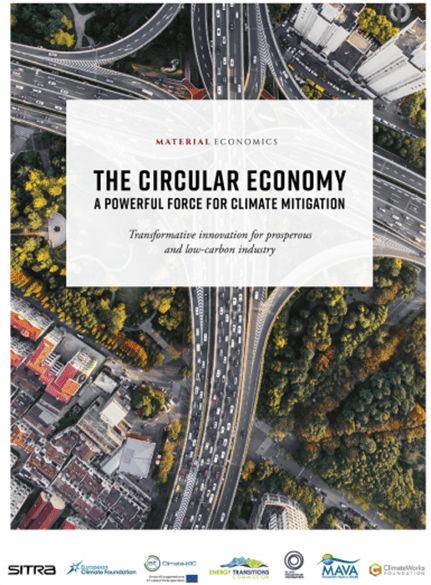Cement
Decarbonising the cement sector poses one of the most difficult challenges in the shift to a low-carbon economy due to process emissions, which are particularly difficult to avoid. Unless there is a significant breakthrough in cement chemistries the most likely solution for process emissions will be carbon capture. Carbon capture could also be used to eliminate emissions from high heat production for kilns, but a switch to clean energy sources could also be envisioned.
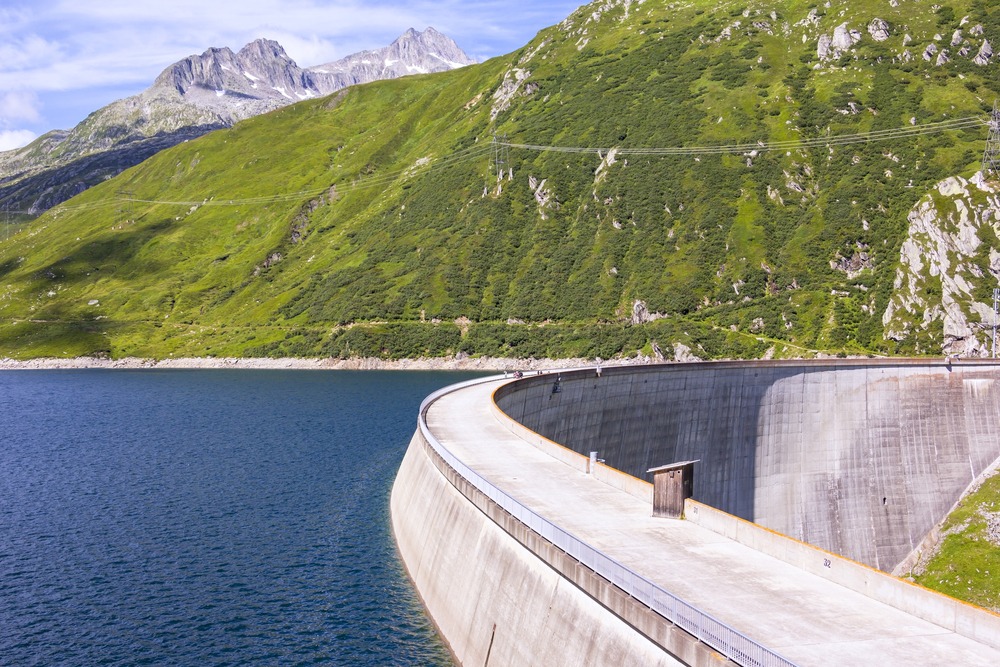
Beyond carbon capture, driving carbon emissions from heat generation towards zero can indeed be achieved through different routes: use of waste or sustainable biomass, shift to hydrogen, and even use of electricity. The last two options are at earlier stages of development and would require significant furnace redesign.
Cement decarbonisation is likely to imply a significant increase in cement prices, but with a limited impact on consumer prices. It may be the costliest sector to decarbonise across the whole economy. Given high decarbonisation costs, the construction sector should seize opportunities to slow down demand growth through greater materials efficiency in building design, waste reduction and innovative recycling and reuse practices.
In the context of the Mission Possible Platform, the ETC works with the Global Cement and Concrete Association to convene a group of high-ambition business leaders who are committed to driving the sector to net-zero emissions. This group will in particular seize opportunities to reduce emissions through improved value chain collaboration and encourage demand for lower-emissions products.


